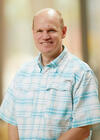In The News: Department of Physics and Astronomy
If you’re braving the “friendly,” crowded skies this holiday season, brace yourself for the inevitably glacial pace of the boarding process.
Jason Steffen, associate professor in physics and astronomy in Las Vegas, joins Matt Bubala to talk about the latest Kepler announcement.
UNLV physics professor Michael Pravica helps the NFL player conduct a few liquid nitrogen experiments.
Marshawn enjoys the internet and goes skydiving with UNLV physics professor Michael Pravica on this week’s #NoScript.
Marshawn Lynch turns a racetrack into a sideshow in the premiere of No Script. UNLV professor Michael Pravica helps explain the physics behind it all.

Alien worlds roughly 10 times the size of Earth could play a major role in the habitability of planets outside of our solar system.
If you’re anything like us, you probably have solar eclipse fever: You've had August 21 marked on your calendar for days with dozens of sun and moon emojis; you’ve got your special viewing glasses, and you’re planning on taking your lunch break precisely at the eclipse’s peak moment (for all of you New Yorkers out there, that’s 2:44 p.m.). If you’re really committed to 2017’s total solar eclipse, you might even have travel plans to the path of totality to see the phenomenon in its truest form.

Over the course of two decades, several thousand planets have been discovered and recorded. Most of these exoplanets look nothing like the planets in our Solar System. Dr. Steffen, a member of the science team for NASA’s Kepler mission, joins us to talk about these discoveries and what we’ve learned from them.
A team of scientists has discovered a new crystal form of DDT that is more effective against insects than the existing one. Its research, which appears in the journal Angewandte Chemie, points to the possibility of developing a new version of solid DDT—a pesticide that has historically been linked to human-health afflictions and environmental degradation—that can be administered in smaller amounts while reducing environmental impact.
One of the most perplexing phenomena in astronomy has come of age. The fleeting blasts of energetic cosmic radiation of unknown cause, now known as fast radio bursts (FRBs), were first detected a decade ago. At the time, many astronomers dismissed the seemingly random blasts as little more than glitches. And although key facts, such as what causes them, are still largely a mystery, FRBs are now accepted as a genuine class of celestial signal and have spawned a field of their own.
One of the most perplexing phenomena in astronomy has come of age. The fleeting blasts of energetic cosmic radiation of unknown cause, now known as fast radio bursts (FRBs), were first detected a decade ago. At the time, many astronomers dismissed the seemingly random blasts as little more than glitches. And although key facts, such as what causes them, are still largely a mystery, FRBs are now accepted as a genuine class of celestial signal and have spawned a field of their own.

Minerals glow like stained glass in a magnified cross-section of a Martian meteorite. A hypnotic swirl of spikes grows at the center of an aloe plant in a natural expression of mathematics’ golden ratio.
